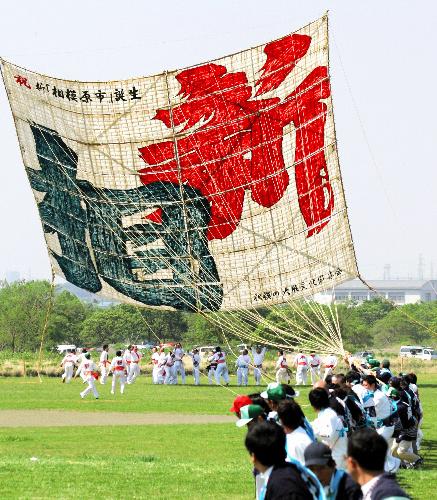Despite Americans’ declining interest in Japan (case in point: American reporters’ questions at the “press availability” after Koizumi’s visit to the White House yesterday all focused on the recent Supreme Court decision on Guantanamo detainees), you can still count on your average educated Joe to recall at least something that Japan is supposedly best at. You can take your pick – smartest kids, best cars, smallest electronics, biggest animation industry – but ask any reasonably educated American about Japan and they will likely be able to remember at least one. But recent developments may make such thinking a little more complicated. Here’s a quick look at recent-ish developments behind some of Japan’s distinctions:
Oldest population: Japan now has the highest ratio of old people in the world, which combined with its now-declining population/workforce and record low birth rates spells possible doom for Japan’s economy. How is a population set to hit 100 million by 2050 going to produce more GDP than the current population of 126 million? According to a report from an association of reform-minded corporate executives known as the Keizai Doyukai, the only way to do it – assuming the reported projections in terms of immigration to Japan and a shrinking population, and that female and elderly labor will reach its potential levels by 2030 – is to bring back the level of productivity Japan enjoyed in the 80s by 2030, and maintain it for 20 years, all while bringing inward FDI levels to US levels (around 22%). And how can Japan do that? While the Doyukai gives a complicated solution, one popular simplified version that basically jives with the report’s suggestions comes from Koizumi-line economist Naoki Tanaka: Japan needs to put all its eggs in Information Technology and continue economic reform policies to minimize the massive waste in Japan’s economy. So even though right now Japan won’t be winning the “most likely to succeed” award, if Japan actually does what the Doyukai and others tell them, we’ll start seeing Japan pop up a lot more in world superlatives (Most efficient supply chains? Most profitable banks? Highest robot to person ratios?)
Top scores in international math tests: Not anymore. Japan slid to sixth in 2003 from first in 2000 in the math section of OECD’s “PISA” test of middle schoolers around the world. This is an especial blow to a country whose education system was once the envy of the world. The results led one education ministry official to comment at the time: ”Their learning skills rank high by international standards but they cannot be said to be the highest.” The 2006 PISAs are going on right now, but it’s unlikely that Japan will regain its glory. This is predicted (by the Keizai Doyukai once again) that a continued lag in Japan’s education system will limit prospects for economic growth.
Highest Longevity: Still the highest, says the WHO. As noted in the above superlative, this actually poses a problem for Japan’s society. Leave it to Japan to prove that you can be too healthy.
Most Expensive City: Tokyo loses out to… Moscow?! Due to the methodology of the survey (compare everything to New York), this is basically explained by the ruble’s exchange rate strengthening against a recently weak dollar (with a similar but smaller strengthening of the yen-dollar rate). Of course, this stat has always been kind of suspect – even the Economist knows that Japan isn’t that expensive of a country if you spend right (e.g.: if you’re not trying to maintain an executive-level American lifestyle).




